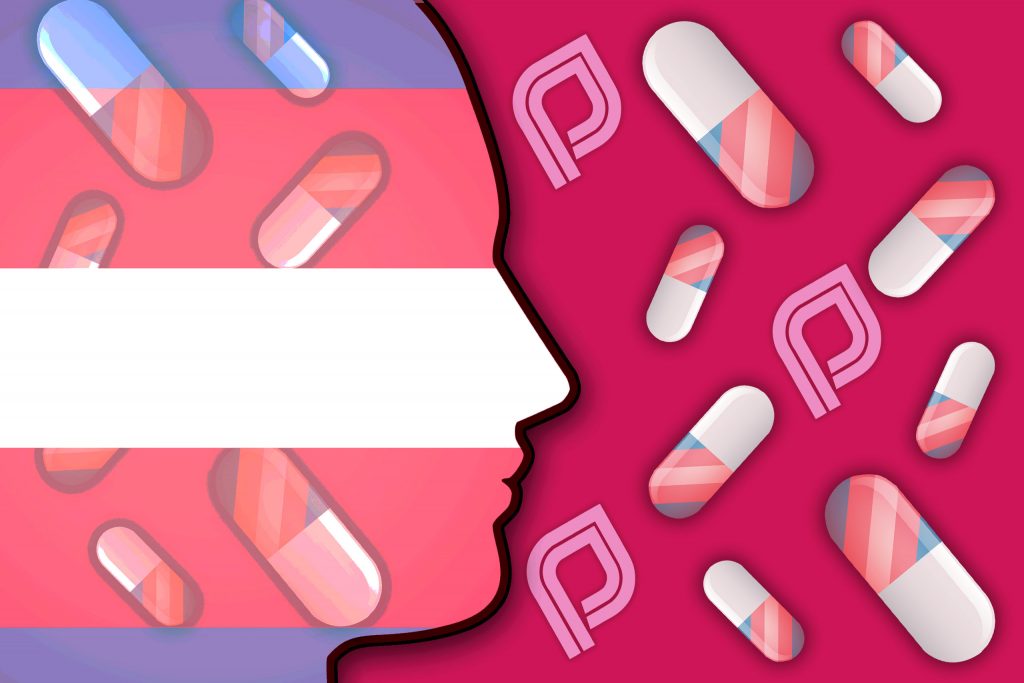Blog Post
Irreversible Damage: Planned Parenthood is helping thousands of girls change genders
Abigail Shrier, columnist at the Wall Street Journal and author of Irreversible Damage: The Transgender Craze Seducing Our Daughters, has penned a scathing exposé of Planned Parenthood’s complicity in providing young girls with cross-sex hormones. The abortion provider has gotten in on the trans business and has become one of America’s largest providers of testosterone and other drugs, and Shrier spoke to a concerned whistleblower who works at Planned Parenthood and doesn’t like what she seeing.
The employee Shrier spoke with was pro-abortion and believed in Planned Parenthood’s mission. She was hesitant to speak out because pro-lifers “will jump at any opportunity to smear them,” but had decided to do so anyway because “their recent roles in trans activism are abhorrent, and they’re digging their own grave.” Shrier was able to confirm the identity of the employee in an interview—her responsibilities “included screening patients, taking down their lists of medications and medical histories before the nurse arrived to treat.”
From Shrier’s substack:
The Planned Parenthood clinic where she worked was located in a small town of roughly 30,000. Abortions were the clinic’s “bread and butter,” something this employee fully supports. But, she noted, “trans identifying kids are cash cows, and they are kept on the hook for the foreseeable future in terms of follow-up appointments, bloodwork, meetings, etc., whereas abortions are (hopefully) a one-and-done situation.”
How significant is this revenue stream? I’ve never been able to obtain numbers on that, though the Planned Parenthood website for Central and Western New York states that: “Nationally, Planned Parenthood is the second largest provider of Gender Affirming Hormone Care.” It seems reasonable to conclude that hormone treatments—pricey as they are—now contribute materially to Planned Parenthood’s bottom line.
According to the employee, based on her recollection, 1-2 new biologically female teen patients seeking testosterone would arrive per day. A few reasonable assumptions and some arithmetic reveal that a shocking percentage of the town’s teen girls came through the clinic over just a few years.
There were no doctors at the clinic where she worked. Nurse practitioners were the professionals with the highest medical training, she said. The clinic employed a gender counselor who had “no actual professional credentials or formal training other than being MtF” (that is, a male-to-female transgender person). Adolescents would come and speak to this gender counselor and Planned Parenthood would then forward the counselor’s “notes to an actual licensed mental health professional somewhere off-site, and rubber stamp approve the patients to begin their transition. This is basically how they circumvented the requirement to speak to an actual counselor,” according to the employee’s Twitter post.
Whether patients received specific treatments—a course of testosterone, say—was decided by the “clinic manager,” with “no prior medical experience” whose prior job was “managing a Wendy’s,” the employee wrote.
Each day, new teen girls would present at the clinic (sometimes with mom). They often arrived in groups of girlfriends, all claiming childhood histories of gender dysphoria and asking to be put on testosterone. Did she believe their testimonies? “I think they were telling what they perceived to be their authentic history to them at the time. Like, I was a 13 year old girl, you know. Everything is very dire, everything needs to be remedied immediately,” she said.
In any case, the script Planned Parenthood instructed her to read from didn’t grant much room for evaluation of patient histories. “The questions that we asked were like, very closed ended…It would be, ‘you know, at what age did this start’? Boom that is it. ‘What kinds of dysphoria do you feel’? Boom that’s it, you know? ‘What do you want out of your transition’? ‘Do you want top surgery?’ ‘Do you want bottom surgery’?”
In taking their histories, the employee did discover that these girls seemed to be suffering from a great deal of emotional pain. “A lot of them have serious emotional issues, a lot of them had a history of abuse and baggage.”
Anxiety, depression, and bipolar disorder were ubiquitous. Often, the employee said, they had visible “self-harm scars” and even “fresh self-harm marks.” But, she said, the medical professionals were never supposed to address those marks. “We just move on exactly the issue at hand”—that is, affirming the adolescents’ self-diagnosed dysphoria and proceeding to a course of treatment.
This treatment—testosterone—carries serious risks for adolescent girls, particularly at the doses at which it is administered, ten to forty times what their bodies would normally handle. Risks include deepened voice, enlarged clitoris, increase in red blood cell count and greater risk of heart attack, infertility, vaginal and uterine atrophy, endometrial cancer—as well as all the unknown risks the come with any major and novel intervention.
She would present the girls with pages that listed a series of medical risks and obtain signatures indicating their “informed consent.” Did any of the girls ever seem troubled by these risks? “I can say anecdotally that I never saw anybody read it,” she said.
Most interesting to me was the fact that, according to the employee, the girls would often arrive to the clinic with a group of friends. (For what other medical treatments do girls arrive with peer group in tow?) It smacked more of the gleeful trips teen girls once took to the mall for ear piercings than the sober medical treatment of a genuine mental health disorder.
What was the mood in the waiting room among these friends? “Super cheerful, giggly. It’s a fun thing,” she said, a touch of cynicism whetting her tone.
I asked her if she and the other nurses and reproductive health assistants didn’t think there was something suspicious about girls’ showing up in groups of friends for treatment—whether it didn’t cross the employees’ minds that peer influence might be at play. “It’s kind of one of those things where you just roll your eyes.” She told me. “The extent of our intervention” was to grant “their requests to start the hormone therapy.”
Did she ever feel like she was participating in something wrong, I wondered. These were, by her own estimation, a notably vulnerable group of girls: they were on all kinds of medications for anxiety and depression and even anti-psychotics like Abilify and Clozaril. “I’ll tell you, I struggled with the morality and reconciling of our actions in giving these kids testosterone and estrogen and stuff. I struggled with that more than I did being in operating room for like a 20 week abortion. It’s a lot to see these kids, like, interpret their feelings in such a way that they end up being confused about their gender,” she said.
Did she or other staff members voice their misgivings about whether they were giving these girls the best treatment? “Yeah. Every day,” she said, before adding: “I mean, it would be one of those things that would be a conversation among professionals. You know, we’re nodding our heads, we’re doing this thing. And then we clock out at the end of the day because we cannot bring it up in discussion with management or the clinic directors or anything because they have these directives from administrators upstate.”
As far as she knew, did any of the girls asking to start a course of testosterone ever get turned down? Perhaps some were sent for psychiatric evaluation before proceeding with testosterone treatment? “None of the girls,” she said. “One of the boys who did confess that he smoked so much weed that he was doubling up on his estrogen… We did end up ceasing his therapy until he saw—I think it was like a substance abuse counselor or something like that. But other than that, we never turned away anybody.”
According to the Planned Parenthood employee’s testimony, in affirmative care clinics like this one, for teens seeking fast medical transition—the medicine cabinet is fully stocked, the customer is always right, and the light is always green.
In short: Planned Parenthood is a gender factory. For details on why this is so dangerous, watch my interview with Abigail Shrier:
For anyone interested in a deep dive, here’s my conversation with Nancy Pearcey, author of Love Thy Body, on the roots of transgenderism:








